Clancy Tucker's Blog, page 239
November 30, 2015
1 December 2015 - A FEW THOUGHTS TO PONDER
A FEW THOUGHTSTOPONDERG'day folks,
Time to drag out some wise quips and funny pictures to keep you alert. Enjoy.
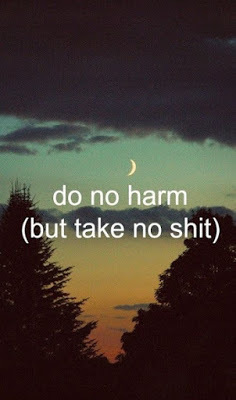
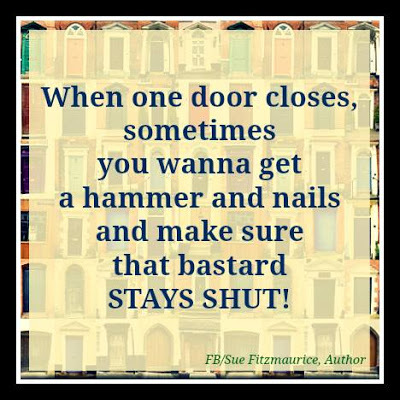
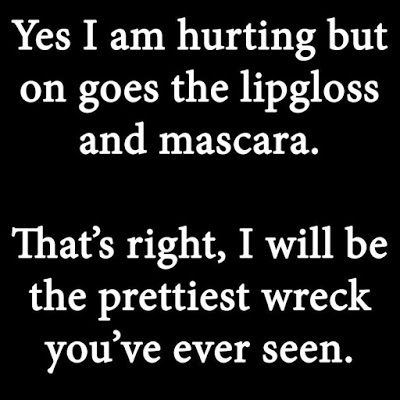

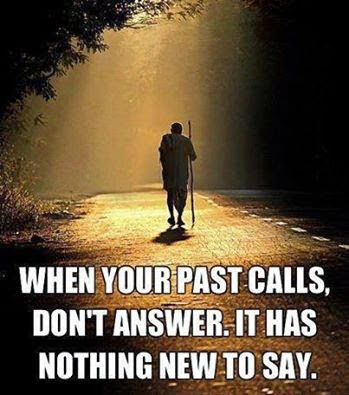
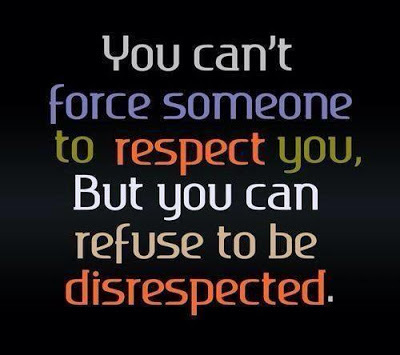
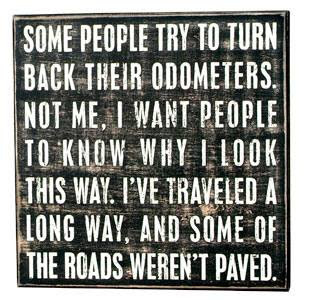
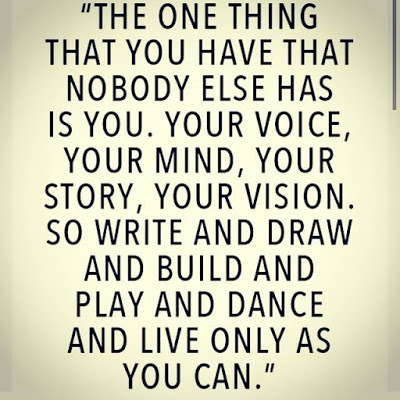
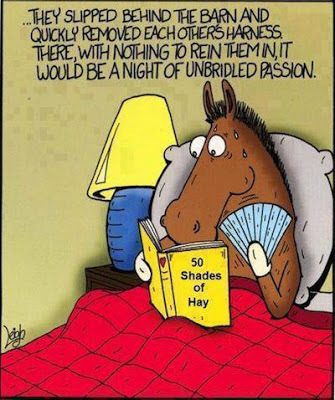

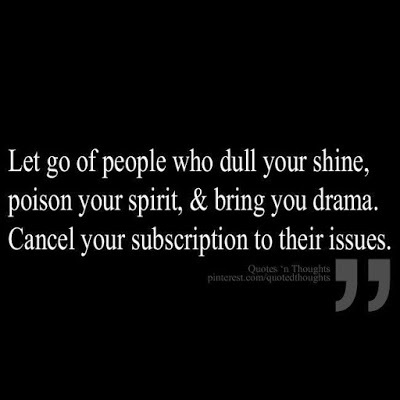
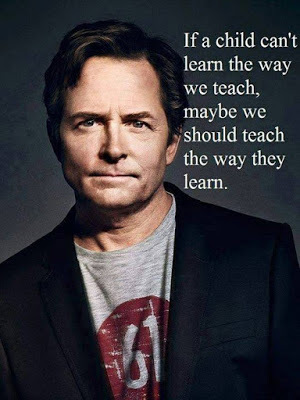
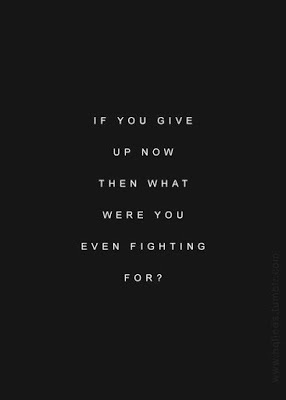
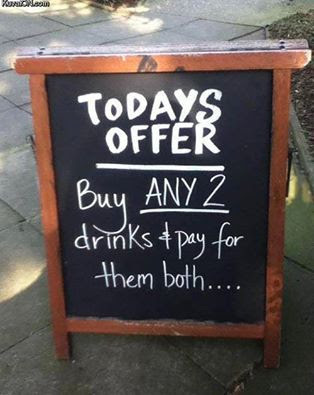
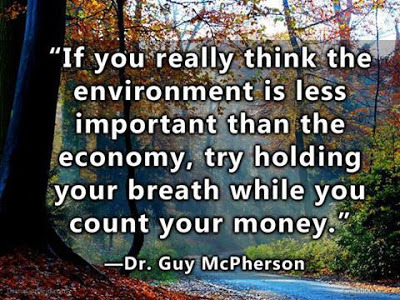
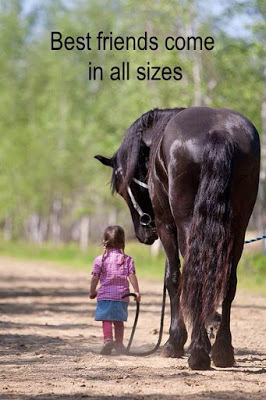
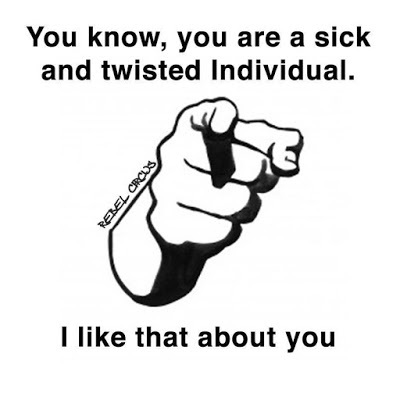

Clancy's comment: I like a lot of these. Oh, by the way, I never knew that horses could read. Did you?
I'm ...
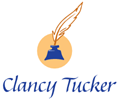
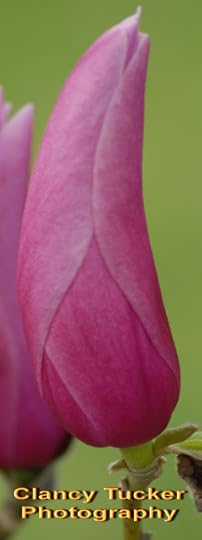
Published on November 30, 2015 02:03
November 29, 2015
30 November 2015 - TRACY DUMPERT - Guest Artist
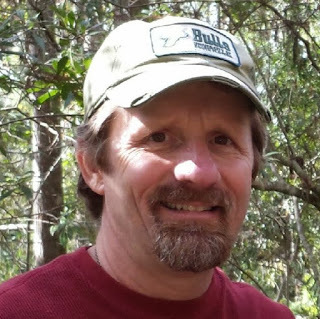 TRACY DUMPERT- Guest Artist -
TRACY DUMPERT- Guest Artist -G'day folks,
Welcome to an interesting artist I recently interviewed. I got to know this talented guy when he sent me a great email after reading some of my books.
Welcome, Tracy ...
1. TELL US A LITTLE ABOUT YOURSELF AND YOUR ARTISTIC JOURNEY.I grew up in a small farming community. Art wasn’t generally looked upon as an option. I relied on music as my artistic art form. I currently play the guitar, ukulele, harmonica, didgeridoo and dulcimer. I played the piano, trombone and drums as well.
It wasn’t until I got into college that I took my first art course. It was my favourite class. Sculpting, painting, etc. However, I still focused on a business degree and relied on art has a hidden hobby.
I draw a lot in pencil and charcoal. I also like Aboriginal work. So I’ve even tried painting Aboriginal type paintings. Growing up in the country and being a “manly man” I’ve taken up sculpting with a chainsaw. I also do wood carvings.
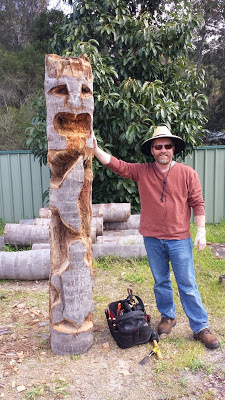
I particularly enjoy doing ethnic/cultural type art. For my chainsaw carvings I like doing Hawaiian Tikis and Totem Poles. I like painting Aboriginal dot works. I like drawing people such as street performers. I even like tying Flies, which I think is a fine art in itself. I think you get the picture as to what I like.
I keep a blog and put all the stuff I work on there. I do have my few followers, as well as family members and friends who like to keep up with what I am doing.
https://sites.google.com/site/tracysartroom/
Here is a link to my blog.
https://sites.google.com/site/tracysartroom/my-blog 2. WERE YOU GOOD AT DRAWING AS A KID?Not really, or at least not that I am aware of.
3. WHEN AND HOW DID YOU BECOME AN ARTIST?I moved to Sydney from America when I was 30. I had a fairly stressful technology job. So I decided to take a drawing class as a way to destress once a week after work. It was a charcoal and graphite drawing class. It was from that point on, 20 years ago when I was 30 that changed my life? I like drawing people, such as portraits, urban settings with people, etc. Since then I look and see things much differently. I appreciate my surroundings much more.
4. WHAT IS THE HARDEST THING ABOUT BEING AN ARTIST?Finding the time in everyday life to do it. I am also very critical of my work. And knowing when to stop working on the drawing or sculpture is a challenge.
5. DO YOU WORK FOR YOURSELF, OTHERS OR BOTH?I work for a technology company. About as far away from art as you can get. But I work near Circular Quay, so I go out at lunch and sketch some of the street performers. I also commute 1.5 hours each day from the Central Coast in NSW to Sydney every day. So when it’s not too crowded I pull out my moleskin notebook and sketch folks on the train. Secretly…so they don’t think I’m some sort of weirdo.
6. WHAT IS YOUR GREATEST ACHIEVEMENT?My greatest personal achievement is raising 3 beautiful daughters and having a successful marriage. As you can imagine they have all had drawn at one point or another. I used my middle daughter as the icon on my blog.
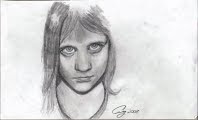
https://sites.google.com/site/tracysartroom/
7. WHAT ARE YOU WORKING ON AT THE MOMENT?Greatest art form of all…brewing beer. I thought I would have a go at that.

Besides that, I’ve been sketching an accordion busker at Circular Quay. And just finished an Aboriginal type painting. https://sites.google.com/site/tracysartroom/other-projects
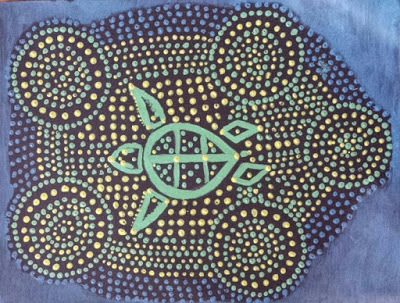

8. WHAT IS YOUR FAVOURITE MEDIUM?Graphite for drawing and a nice big Gum tree for carving.
9. WHAT INSPIRES YOU?The talent that some people have is amazing. Every day I look at works people have done and posted on Pinterest and Facebook. It amazes me how talented some people are. It also inspires me to continue with my art when people comment positively on works I’ve done. I’ve been on the train where people have been observing me while I draw and then meet up with me before they get off and tell me how wonderful it is. That makes me feel good. My harshest critics are my family.
10. WHAT DO YOU PREFER TO PAINT OR DRAW? I like drawing because I can do it anywhere. I just pull out a sketchpad and pencils and then I’m good to go. I always have a pencil and notepad with me. I do like to go back and touch up my drawings later by adding water colours to them. Here is some of the stuff in my notebook: https://sites.google.com/site/tracysartworld2/my-drawing-pad
11. DO YOU HAVE ANY TIPS FOR EMERGING ARTISTS?Just do it as much as possible. It’s amazing how much better you get with practice. And don’t listen to the critics. There are more people who critique your art that could never produce what you do.
12. DO YOU SUFFER FROM ARTIST’S BLOCK?At times. Generally that happens when I doubt my abilities.
13. DO YOU HAVE A PREFERRED SCHEDULE?Usually late at night when the rest of the family is in bed.
14. DO YOU HAVE A FAVOURITE PLACE TO WORK?I like drawing at the beach. There are a lot of people to draw at the beach. Below is a couple of 5 minute sketches from the beach. You can also find me sitting in a corner of my house with my headphones on and a bottle of beer.
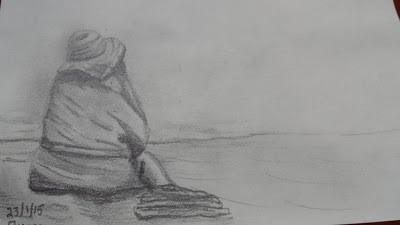
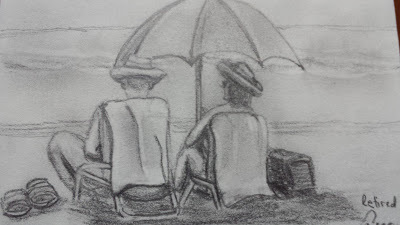
15. WHAT IS YOUR GREATEST JOY IN YOUR WORK?When I think I’m done and I look at it and say to myself, “Yep, that’s good.”
16. WHO IS YOUR FAVOURITE ARTIST / ILLUSTRATOR AND WHY?I don’t have a favourite, as I like so many different artists. However, the few that stand out is:Steve Barton – He is an American painter who paints tropical scenery. But he uses a wavy frame. It’s cool, check it out here… http://bartonstudios.com/. I also really like a young Aboriginal painter, Chern'ee Sutton, http://www.cherneesutton.com.au/Other painters I like include Linda MacAulay, John Patrick Dynon, and the old greats, i.e. Vincent van GoghDrawing, I like J. D. Hillberry, Darrel Tank and Henri Matisse.
17. WHAT’S THE GREATEST COMPLIMENT YOU EVER RECEIVED?I received an email from someone who visited my blog and they said that I inspired them to start drawing.
18. WHAT WAS THE WORST COMMENT YOU EVER RECEIVED?I don’t remember. More than likely I probably didn’t give a crap what they said.
19. WRITERS ARE SOMETIMES INFLUENCED BY THINGS THAT HAPPEN IN THEIR OWN LIVES. ARE YOU?No. I just really like people, their faces, expressions and actions. I don’t generally have lots of friends. Just a lot of acquaintances. I like to study people. I grew up in a small town. Not too many people in the town. There weren’t many kids in my school either. So…maybe yes, that is what influenced me in my life and the desire to observe people.
20. HAVE YOU WON ANY PRIZES OR AWARDS?No. I’m more of a closet hobbyist. I don’t really want to pay someone an entry fee to have them tell me my stuff isn’t as good as everyone else’s.
21. OTHER THAN DRAWING, WHAT ELSE DO YOU LOVE?Music. My house has a lot of music. My whole family plays violin, Sax, Guitar, Uke, Piano, Harmonic, Dulcimer and singing.
22. WHAT WOULD YOU SAY TO ALL WORLD LEADERS IF YOU HAD THE OPPORTUNITY?Get in touch with the people. Most of our leaders have never experienced life the way most people do and just don’t understand what the common person goes through on a daily basis. So they have no idea what’s in the best interests of the people they represent.
23. DESCRIBE YOUR PERFECT DAY.Wake up to a nice warm day where I can walk out on my porch with a cup of coffee and hear the birds and the ocean. Then spend as much time with my family as possible doing the things we love together. We draw, paint, fish, knit, play music together, and go to the beach for sunset picnics… wait a second, most of my days are perfect. Now if I could just get rid for commuting to the city and going to work, it would be perfect.
24. WHAT ARE YOUR PLANS FOR THE FUTURE?Not sure. We’ll see wherever life decides to take me. It’s been an awesome journey so far.
25. HAVE YOU MET SOME GREAT PEOPLE ALONG THE WAY?Yes. I’ve met great musicians and artists. Many influential politicians, and many other folks. Some of the greatest people I have met on the train. Just the average person on their way home from work who are willing to have a chat. I only hope they feel the same way about me.
26. HOW DO YOU PROMOTE YOURSELF?Word of mouth, Facebook groups and my website.https://sites.google.com/site/tracysartroom/
27. DO YOU MENTOR OTHERS? My kids. They are very artistic. So I give them tips and tricks and keep encouraging them. There are also people I have worked with who shared the desire to draw and I persuaded them to take it up and then kept encouraging them to continue.
28. DO YOU HAVE A MENTOR?No. Just YouTube, Pinterest and artist friends on Facebook. It’s amazing what you can learn on YouTube.
29. ANYTHING YOU’D LIKE TO ADD?The world would be a much better place if there were more artists, musicians and authors.
“Everything always works out for best. Sometimes it may not seem like it. But if you wait long enough….it will.” – Tracy Dumpert
“People come into your life for a reason, a season or lifetime. When you figure out which it is you’ll know exactly what to do.” –From a great author…sound familiar??

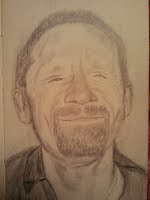
MORE OF TRACY'S WORK

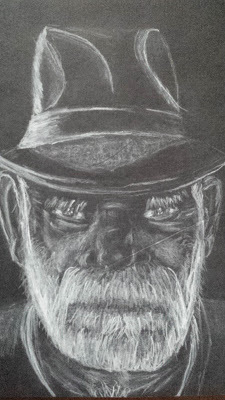
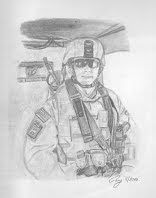
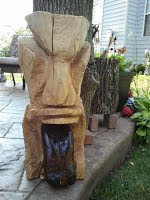
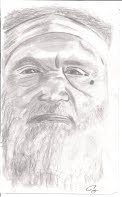
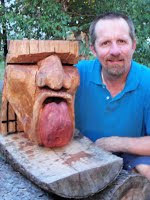

Clancy's comment: Thank you, Tracy. Great work. Very clever. Your Aboriginal paintings are excellent. Nice final quote by the way. Sounds very familiar. Oh, I just love homemade beer. Just sayin'.
I'm ...
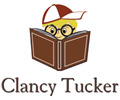
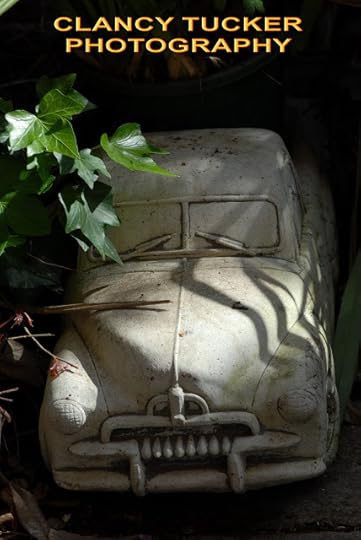
Published on November 29, 2015 02:17
November 28, 2015
29 November 2015 CLANCY TUCKER PHOTOGRAPHY
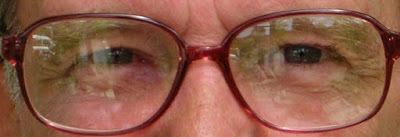
CLANCY TUCKERPHOTOGRAPHY
G'day folks,
Today, I present one of my other passions - photography.
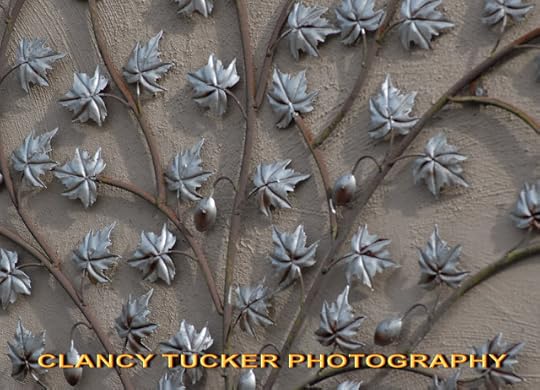
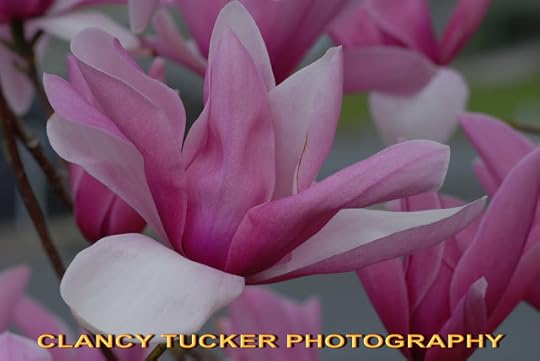
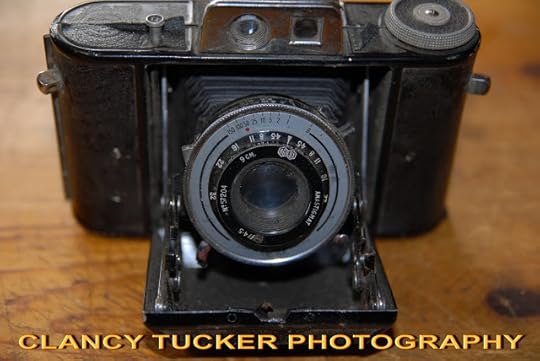
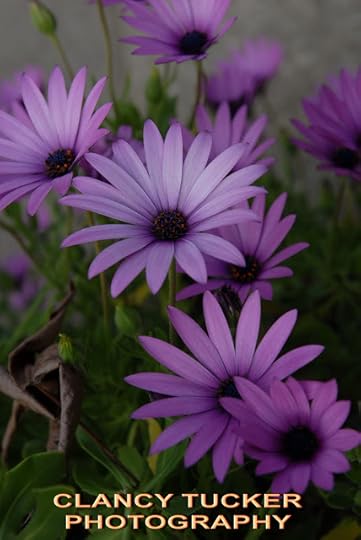
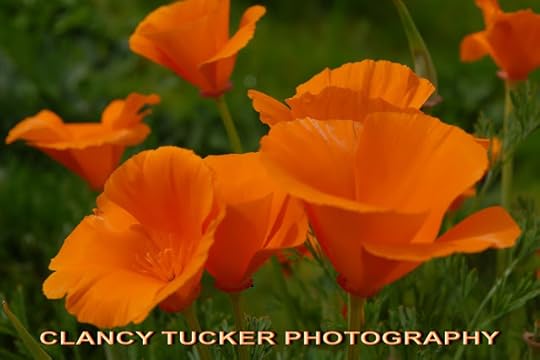
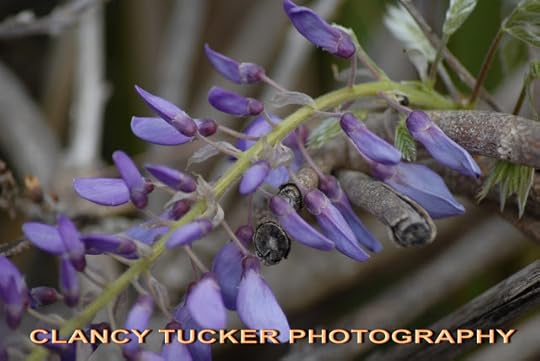
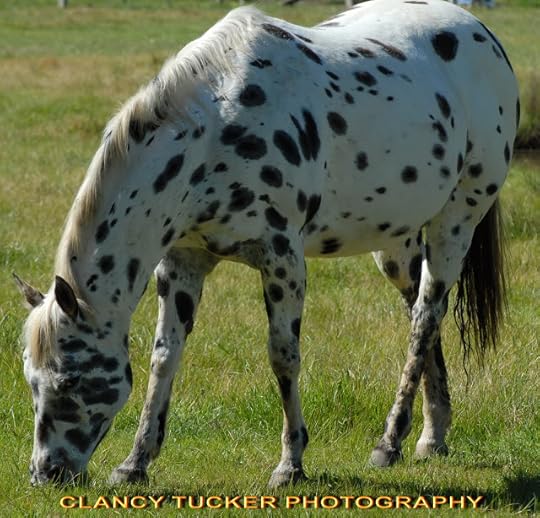
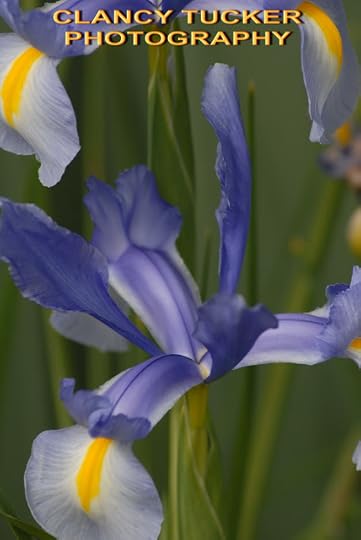
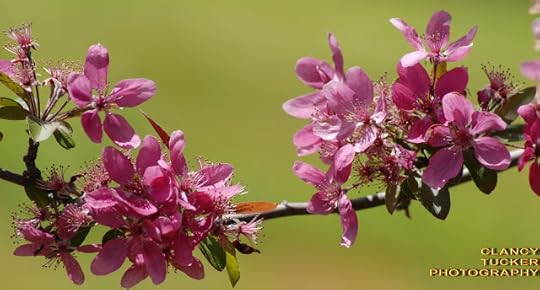
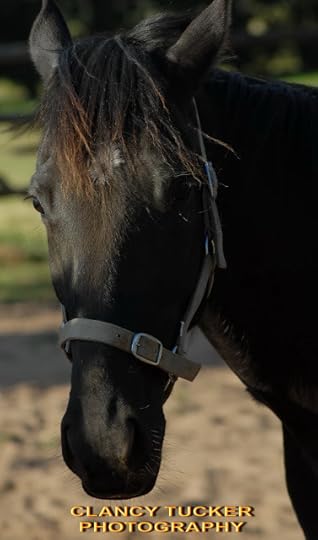
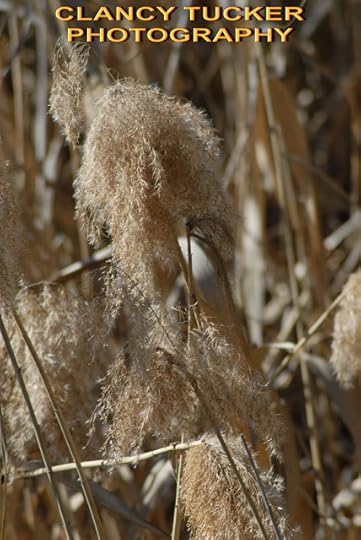
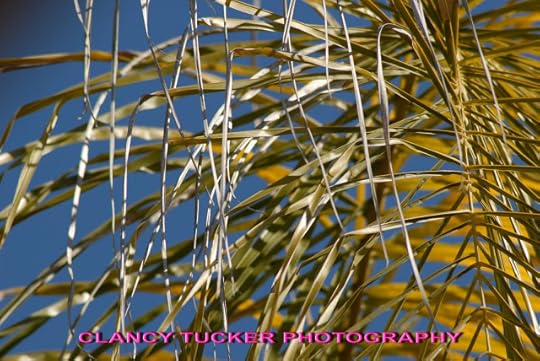

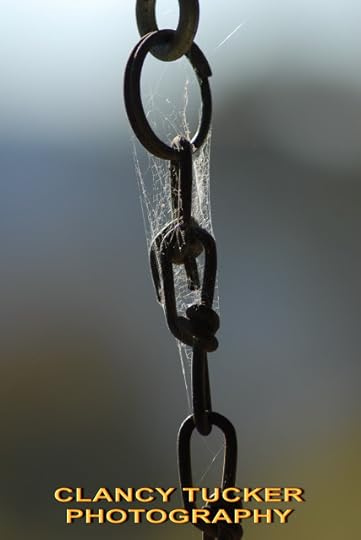


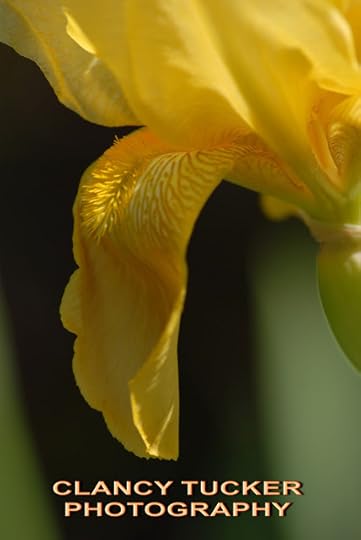
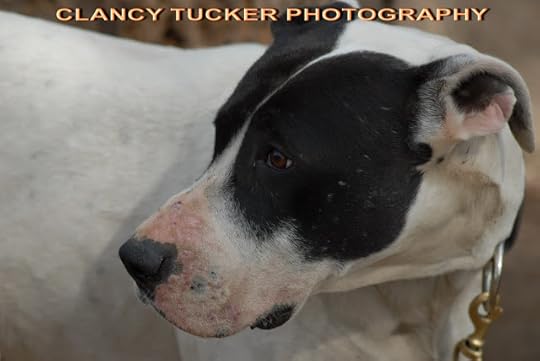
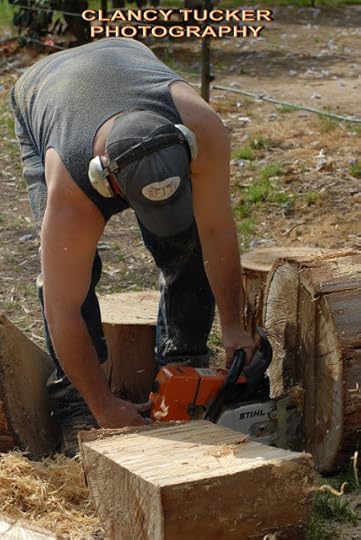

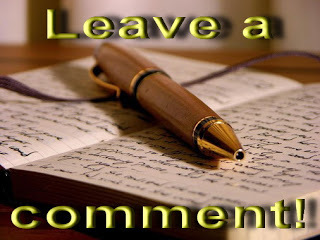
Clancy's comment: There ya go, folks.
I'm ...

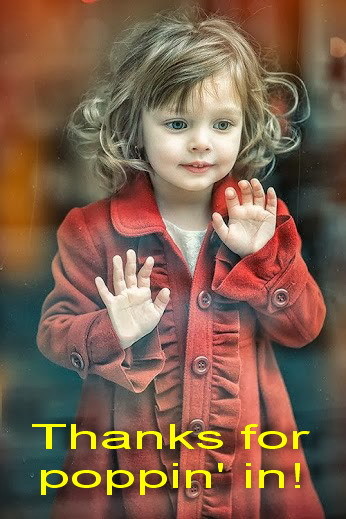
Published on November 28, 2015 03:28
November 27, 2015
28 November 2015 - LEE KOFMAN - Guest Author
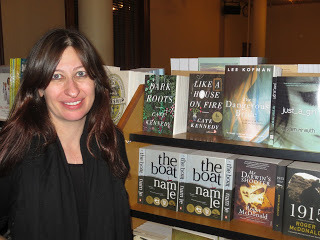
LEE KOFMAN
- Guest Author -G'day folks,
Today, I welcome another very talented author from Australia.
Welcome, Lee ...
1. TELL US A LITTLE ABOUT YOURSELF AND YOUR WRITING JOURNEY.I’m a Russian-born Israeli-Australian author, writing teacher and mentor based in Melbourne. I published three fiction books in Hebrew, but since 2002 I have been writing exclusively in English and publishing short stories, creative nonfiction and poetry widely in Australia, Scotland, UK, USA and Canada. My first book in English, the memoir of my misadventures in trying non-monogamy, The Dangerous Bride: Memoir of Love, Gods and Geography, was published a year ago, received a lot of attention and was included in Best Books 2014 lists in The Age and Australian Book Review.
2. WHEN AND HOW DID YOU BECOME A WRITER?I began publishing work at sixteen - mostly journalism and occasional short stories for young adults. I lived then in Israel and worked as a young reporter for a national magazine until I turned eighteen and began the compulsory army service. My first book, a semi-autobiographical novel about growing up with scars on my body, was published when I was twenty years old. 3. WHAT TYPE OF PREPARATION DO YOU DO FOR A MANUSCRIPT? DO YOU PLAN EVERYTHING FIRST OR JUST SHOOT FROM THE HIP?I wish I was a planner! This would have made my life easier. As it is, I usually discover what I am writing about just by doing it and this is why my first drafts usually take long time to materialise. I tend to start with a lot of mess: random notes, quotes, vague ideas, disparate sentences and paragraphs, snippets of scenes or argumentative writing, references for future reading. This mess can be stressful and confusing, but I also find it conductive to my creativity. Writing around the topic means I give myself the opportunity to come up with something unexpected, hopefully fresh. Plus, writing like this keeps me curious, curious about what I’m really doing. Later I organize the mess into a sort of coherent flow.
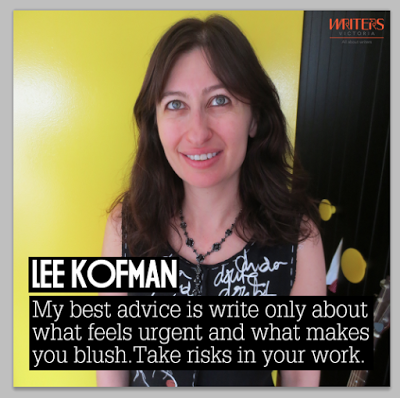
4. WHAT DO YOU ENJOY MOST ABOUT BEING A WRITER?I get to go to cafes, which is where I love writing. Plus, in my work I process many of my own experiences, and thus save a lot of money I would have otherwise spent in therapy… More seriously, writing serves for me the same functions that religion serves for many. It helps me to understand better the world around me and through writing I try to better myself.5. WHAT IS THE HARDEST THING ABOUT BEING A WRITER?The agonizing self-doubt I experience almost every time I write.
6. WHAT WERE YOU IN A PAST LIFE, BEFORE YOU BECAME A WRITER?I didn’t really have a professional life before I became a writer, because I started so early. But because I am a greedy person, and because it is difficult to make living just from writing, up until five years ago when I finally could afford focusing on writing, I did many other things. Amongst all else, I worked in a singles’ agency, organised dance parties, worked with people with mental illnesses, was a journalist and, most recently, taught social work and social sciences to undergraduate and postgraduate university students. I think, or rather hope, that these diverse occupations fed into my writing and made it richer. Now I only work in a writing related sphere, mentoring other writers and teaching writing classes.
7. WHAT IS YOUR GREATEST WRITING ACHIEVEMENT?This is a really difficult question to answer… Probably the fact that early in my thirties I managed to change the language in which I write and that recently I published my first book in English.
8. WHAT ARE YOU WORKING ON AT THE MOMENT?I am in the process of co-editing an anthology of short memoirs, Rebellious Daughters, with the writer Maria Katsonis. The book is due to be released mid-next year and features some of the finest Australian female writers.
9. WHAT INSPIRES YOU?I only write about what feels urgent to me, so I don’t need external inspiration to generate ideas. However, during the writing process itself I often lose heart and then I re-read writers who make me fall in love with writing again –Joan Didion, Robert Dessaix, Marguerite Duras, Hanif Kureishi, Gustave Flaubert to name a few. Going away to writing residencies also helps.
10. WHAT GENRE DO YOU WRITE?My latest book is a memoir and since its publication last year I’ve been mostly writing personal essays, so I write a lot of creative nonfiction now. But my first books were fiction: two novels and a collection of short stories. Occasionally I also publish poetry.
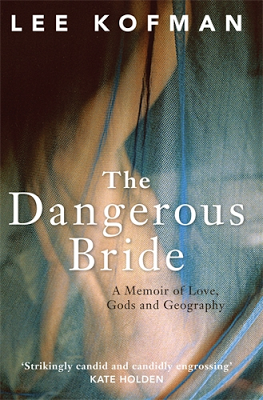
11. DO YOU HAVE ANY TIPS FOR NEW WRITERS?The most important thing for a beginning writer, and for any writer for this matter, in my view is to ensure they are writing not what they think they ought to, or what may sell, but what is truly urgent to them. Best books usually arise from burning questions writers need to resolve.
I also think too many beginning writers are busy focusing on plot development, and on their characters. These are crucial aspects of creating a story. Yet, sadly, what often gets overlooked is the most fundamental feature of good writing - the quality of prose, the minute choices of words, in short the writer’s voice. Writer’s voice is not only an aesthetic component, but the essence of a work. The way we tell our stories impacts directly on their content.
12. DO YOU SUFFER FROM WRITER’S BLOCK?I had one spell lasted several years. It only ended once I realised that this was happening because I was too scared to write the book I needed to write and instead tried to work on safer projects. So I stopped all I was doing and wrote The Dangerous Bride which explores the possibly last sexual taboo in our society – non-monogamy.
13. DO YOU HAVE A PREFERRED WRITING SCHEDULE?Since I became mother, I simply write whenever I have childcare, which is usually two long days of ten to eleven hours and one half day of four hours, plus I write during my son’s daily two-hour sleeps. So I no longer have the luxury of daydreaming or ‘getting into the mood’ for writing. Instead, whenever I can I just attack that mythical blank page (not always successfully, though).
14. DO YOU HAVE A FAVOURITE WRITING PLACE?I tend to be non-monogamous not only in my intimate life, but also in my working habits. When I write, I like wondering between my local café, my bed, my couch and my desk.
15. WHO IS YOUR FAVOURITE AUTHOR AND WHY?I don’t have one favourite author, but many authors. But I do have a favorite book, whichaffected me most profoundly, on many levels - Master and Margarita by Mikhail Bulgakov. I read this novel several times, the first being when I was still a child, and I believe its philosophical and humanist bent helped shape my personality and my tragicomic worldview. The book taught me about the redeeming power of laughter in the face of the despicable, how irony rather than righteousness is our best friend. This novel was also partially responsible for my quasi-metaphysical approach to writing, where I often use my work to try finding some hidden order in the chaos of life.
16. WHAT’S THE GREATEST COMPLIMENT YOU EVER RECEIVED FROM A READER?One of the readers of The Dangerous Bride said that reading my memoir felt to her like sitting on a porch on a rainy night and drinking vodka. I was stunned by how she, unknowingly, described exactly what I was feeling as I was writing the book...
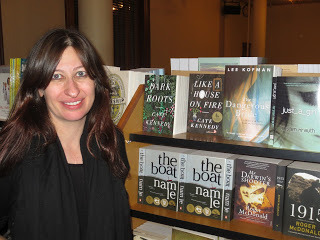
17. WRITERS ARE SOMETIMES INFLUENCED BY THINGS THAT HAPPEN IN THEIR OWN LIVES. ARE YOU?By nature I am a confessional writer. My work almost always somehow relates to my life or at least to people who have mattered in my life. But I often disguise my own experiences by fictionalising them, sometimes even attributing them to male characters. The Dangerous Bride is my most personal work to date not just because I describe my life there, but also because of the extent to which I expose my internal world of desires, paradoxes and weaknesses.
18. OTHER THAN WRITING, WHAT ELSE DO YOU LOVE?Reading, of course. I read at least a book a week. I am also into cooking; sometimes I fantasise about an alternative life I could have had as a chef… Then I am also a great consumer of arts, particularly painting, dance and theatre.
19. DID YOU HAVE YOUR BOOK / BOOKS PROFESSIONALLY EDITED BEFORE PUBLICATION?All my four books are published by mainstream publishers, so I’ve always had professional editors working on my manuscripts. Unlike some other writers, I thoroughly enjoy this process of being edited. It feels so good to have another person care deeply about something that obsessed me for some years during the writing period.
20. WHAT ARE YOUR PLANS FOR THE FUTURE?Once I finalise the anthology early next year, I’m hoping to clear some time for thinking and sort of trial-and-error writing to get the feel for what kind of a next book I want to write.
21. DOES THE PUBLISHING INDUSTRY FRUSTRATE YOU?In some ways, yes. I know recently it’s been tough for this industry, but I hope that mainstream publishers will resume taking more risks, or at least stop getting increasingly more and more cautious in their publishing choices, so that we can have many more Joan Didions and Henry Millers out there.
22. DID YOU EVER THINK OF QUITTING?Many, many, many times… Thomas Mann once wrote that ‘writers are those people who find writing difficult’. He must have meant me. Writing rarely comes easily to me, because it is always bound with enormous self-doubt. What I find particularly daunting is creating first drafts. I can be seized then, to the point of paralysis, by the feeling that I have nothing, or nothing worthy, to say. So of course I tried to quit, but somehow never couldn’t. I think for me writing is like romantic love – often painful, but paradoxically also essential for my wellbeing.
23. HOW WOULD YOU DEFINE ‘SUCCESS’ AS A WRITER?For me it has never been about sales/money. If my work speaks to enough intelligent readers, this is a success for me. I think I write to ‘impress’ a particular type of a reader…

24. DESCRIBE YOURSELF IN FIVE WORDS.Flamboyant, shy, inconsistent, funny (I hope…). Oops, these are already six words!
25. WHAT IS THE TITLE OF THE LAST BOOK YOU READ? GOOD ONE?I just finished a terrific collection of personal essays by another confessional writer, Emily Gould, called And the heart says whatever. She is very young and very sharp. I was utterly taken by her self-awareness, candor and wit.
26. ANYTHING YOU’D LIKE TO ADD?Yes. Thank you very much, dear Clancy, for having me on your blog.
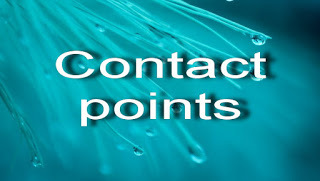
WEBSITE
THE DANGEROUS BRIDE
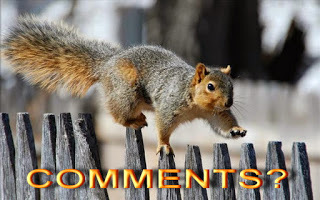
Clancy's comment. Thank you, Lee. The title of your book has me interested. I might have to buy it to find out how dangerous the bride was / is.
I'm ...
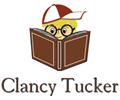
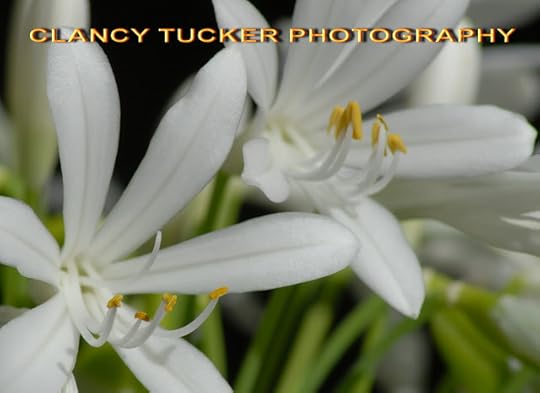
Published on November 27, 2015 01:45
November 26, 2015
27 November 2015 - ERIN BROCKOVICH
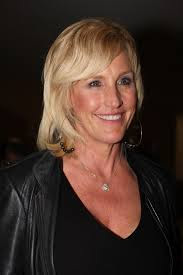
ERIN BROCKOVICH
G'day folks, Erin Brockovich is best known for her involvement in one of the largest direct action lawsuits in U.S. history and is the subject of the 2000 film 'Erin Brockovich.'
Synopsis
Consumer advocate and environmental activist Erin Brockovich was born in Kansas in 1960. While working as a file clerk at a Los Angeles law firm in 1992, Brockovich uncovered documents that ultimately led to more than 600 residents of Hinkley, California, filing a lawsuit against utility giant PG&E. The $333 million settlement they received is the largest of its kind in the history of the United States. The story of Brokovich’s life and involvement in the case was the subject of the 2000 film Erin Brockovich, which starred Julia Roberts in the title role. Since the film’s release, Erin Brockovich has continued to work as a consumer advocate and environmental activist.
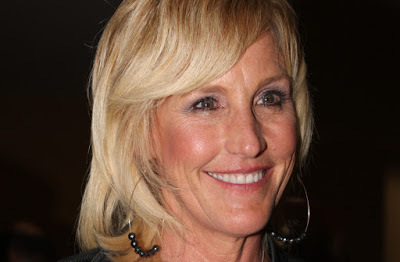
Early Life
Consumer advocate and environmental activist Erin Brockovich was born Erin Pattee in Lawrence, Kansas, on June 22, 1960. The youngest of four children, she grew up in a tightknit middle-class family. Her father was an industrial engineer, and her mother was a journalist. Diagnosed as dyslexic at a young age, Erin was not a particularly good student. After graduating high school in 1978, Erin briefly attended Kansas State University before transferring to Miss Wade's Fashion Merchandising College (now Wade College) in Dallas, Texas, where she graduated with an associate’s degree in applied arts in 1980.
After earning her degree, Erin moved with a friend to Newport Beach, California. After working briefly as a management trainee at Kmart, in 1981 she quit and entered and won the Miss Pacific Coast beauty pageant. She also met her first husband, Shawn Brown, around this time, whom she married in April 1982. The young couple moved around the country for the next few years, during which time Erin gave birth to two children, Matthew and Katie. However, their marriage eventually fell apart, and they were divorced in 1987. Now a single mother, to support her children Erin found work as an assistant at a Reno, Nevada, brokerage firm, where she met Steve Brockovich. They married in 1989 but had divorced within a year, at which point Erin learned she was pregnant with her third child, Elizabeth. The events that followed would set Erin Brockovich on the path to her eventual fame.
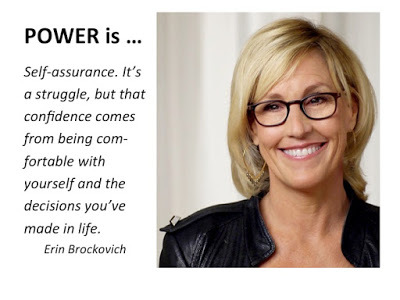
Hinkley and Hollywood
Shortly after her divorce, Brockovich was involved in a severe car accident that necessitated her having neck surgery. She then moved to Los Angeles’s San Fernando Valley, where she was referred by a friend to the law firm Masry & Vititoe, whom she hired to represent her in her accident case. Brokovich was eventually awarded a small settlement, but not enough to support her family with. Feeling sorry for her, in 1992 attorney Ed Masry offered her a clerical job at the firm.
One day, while filing documents for a real estate case involving the utility giant Pacific Gas & Electric (PG&E), Brockovich noticed that the paperwork included blood samples. Her suspicions aroused, she asked Masry permission to look into the matter further. In subsequent visits to the California desert town of Hinkley, Brockovich eventually uncovered evidence linking a rash of illnesses there to high levels of hexavalent chromium found in the drinking water. When the pollution was eventually traced back to the PG&E compressor station in Hinkley, in 1993 more than 600 hundred of the town’s residents hired Masry & Vititoe to represent them. After information surfaced during the trial that suggested PG&E had been aware of and tried to cover up the pollution, in 1996 the case was settled for $333 million, the largest in United States history for a case of its kind.
For her part in bringing the case to the firm, Brockovich received a fee of $2.5 million. But the publicity that the case received also brought Brockovich to the attention of Danny DeVito’s production company, Jersey Films, who bought the rights to Brockovich’s story in 1995. Released in 2000, the film Erin Brockovich stars Julia Roberts as Brockovich and Albery Finney as Masry in a mostly accurate recounting of the Hinkley lawsuit. It also features a small cameo by Brockovich herself, who appears briefly onscreen as a waitress. The movie was a critical and commercial success, earning multiple Academy Award nominations, and for her performance as Brockovich, Julia Roberts won the award for Best Actress.
Fame and Consumer Advocacy
The success of the film made Brockovich famous, and in the years since its release she has used that fame to various ends. In 2001 she published the book Take It from Me: Life’s a Struggle But You Can Win, which became a New York Times best seller, and was also the host of a Lifetime series called Final Justice with Erin Brockovich as well as the ABC special Challenge America with Erin Brockovich. She has also become an in-demand speaker, frequently traveling the international lecture circuit, and was one of the primary contributors to the 2012 documentary Last Call at the Oasis, an investigation into the impact of the depletion of the world’s water supply.
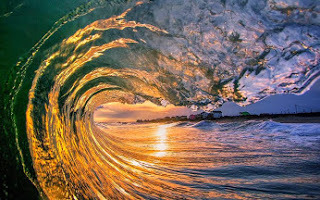
In the time since the Hinkley lawsuit that made her famous, Brockovich has continued to work as a consumer advocate and environmental activist. She has been involved in numerous successful lawsuits against environmental polluters as well as ongoing lawsuits involving automobiles, pharmaceuticals and medical devices. She is the president of Brockovich Research & Consulting and in partnership with Google curates a crowd-sourced map intended to track possible environmental health hazards around the world.

Clancy's comment: Always have time for an activist who is prepared to go out on a limb for justice.
I'm ...


Published on November 26, 2015 03:05
November 25, 2015
26 November 2015 - MUM AND SON KOALA
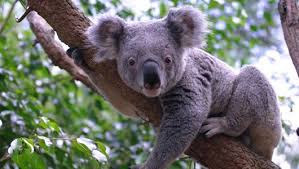
MUM AND SON KOALA
G'day folks,
Know much about the koala? The koala is an arboreal herbivorous marsupial native to Australia. It is the only extant representative of the family Phascolarctidae, and its closest living relatives are the wombats. Now, check out this great story.
A Baby Koala clings to his mother while she undergoes surgery.
Lizzy the koala was taken to a wildlife hospital in an Australian zoo, with her son holding on to her side. Poor Lizzy had been hit by a car. Her little boy, Phantom, only 6-months-old, was luckily unharmed and screamed when they tried to remove him from his mother.
Lizzy suffered a collapsed lung that required emergency surgery. Phantom continued to hold on and would not leave her even during the operation.
Lizzy survived the surgery and is currently recovering with Phantom by her side.


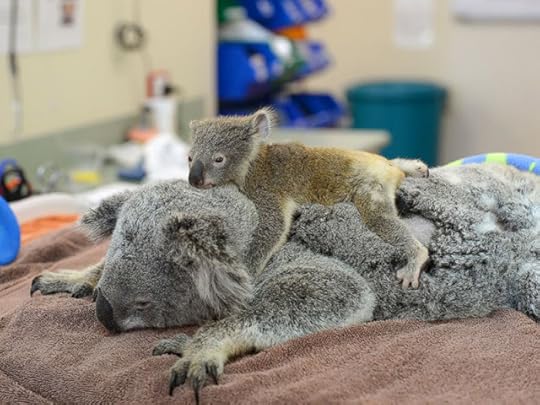
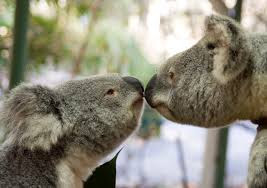
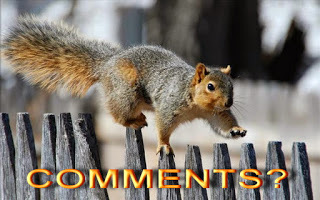
Clancy's comment: Typical mother. Typical baby, eh? Great story with a good ending.
I'm ...
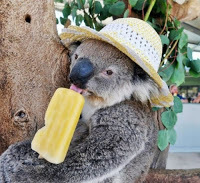
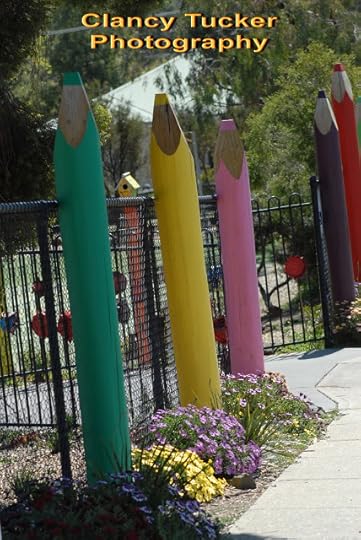
Published on November 25, 2015 03:21
November 24, 2015
25 November 2015 - COLONEL SANDERS AND KFC
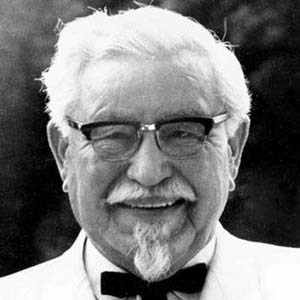
COLONEL SANDERS AND KFC
G'day folks,
Ever had KFC chicken? Know much about the famous colonel? Stay tuned. Colonel Harland David Sanders was an American businessman, best known for founding fast food chicken restaurant chain Kentucky Fried Chicken and later acting as the company's goodwill ambassador and symbol.
On September 9, 1890, Colonel Harland Sanders was born on a farm outside Henryville, Indiana. More than 30 years after his death, the man in the trademark white suit and black string tie who pioneered Kentucky Fried Chicken’s “finger-lickin’ good” secret recipe remains the public face of the fast-food chain. Check out eight surprising facts about the fried-chicken tycoon.
1. Sanders opened his first restaurant inside a gas station.
When Sanders first began to serve meals to truck drivers at an old family dining room table wheeled into the front of his Corbin, Kentucky, service station in 1930, fried chicken was not on the menu because it took too long to prepare. His country ham and steak dinners proved
 so popular, however, that he soon opened Sanders’ Café across the street and began to serve chicken fried in an iron skillet. Food critic Duncan Hines included the restaurant in his 1935 road-food guide, and it was there in 1939 that the colonel used pressure cookers to perfect his quick-frying chicken coated in his secret recipe of 11 herbs and spices.
so popular, however, that he soon opened Sanders’ Café across the street and began to serve chicken fried in an iron skillet. Food critic Duncan Hines included the restaurant in his 1935 road-food guide, and it was there in 1939 that the colonel used pressure cookers to perfect his quick-frying chicken coated in his secret recipe of 11 herbs and spices.2. He wounded a business rival in a deadly shootout.
The hotheaded Sanders never backed down from a fight, which served him well in the rough-and-tumble “Hell’s Half-Acre” neighborhood that surrounded his Shell Oil gas station. When the future fast-food giant painted advertising signs on barns for miles around, the aggressive marketing tactic rankled Matt Stewart, who operated a nearby Standard Oil gas station. Told that Stewart was painting over one of his signs for a second time, Sanders rushed to the scene with two Shell executives. According to Josh Ozersky’s book “Colonel Sanders and the American Dream,” Stewart exchanged his paintbrush for a gun and fatally shot Shell district manager Robert Gibson. Sanders returned fire and wounded Stewart in the shoulder. Stewart was sentenced to 18 years in prison for murder, but charges against Sanders were dropped after his arrest.

3. Sanders served in the military but was an honorary colonel.
Sanders, who falsified his birth date in order to enlist in the U.S. Army in 1906, served in Cuba for several months before his honorable discharge. In 1935, Kentucky Governor Ruby Laffoon issued a ceremonial decree that commissioned Sanders as an honorary colonel. After a second honorary commission in 1949, Sanders embraced the title and tried to look the part by growing facial hair and donning a black frock coat and string tie. Soon after, the colonel switched to a white suit, which helped to hide flour stains, and bleached his mustache and goatee to match his white hair.
4. The colonel delivered babies and practiced law before hitting it big in fast food.
Sanders had an extremely varied résumé before finding success in the fried chicken business in his 60s. As a young man, he toiled as a farmhand and streetcar conductor before working for railroad companies across the South. Aspiring to be the next Clarence Darrow, Sanders studied law by correspondence and practiced in justice-of-the-peace courts in Arkansas until a courtroom brawl with a client derailed his legal career. He operated a steamboat ferry that crossed the Ohio River between Kentucky and Indiana, and he sold life insurance and automobile tires. During his time in Corbin, Sanders even delivered babies. “There was nobody else to do it,” Sanders recounted in his autobiography. “The husbands couldn’t afford a doctor when their wives were pregnant.”
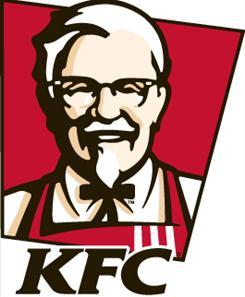
5. His first Kentucky Fried Chicken franchise was in Utah.
The colonel’s fried chicken first became a fast-food hit in an unlikely location—Salt Lake City, Utah. It was there in 1952 that Pete Harman, a Sanders friend who operated one of the city’s largest restaurants, became the colonel’s first franchisee. According to Ozersky, Harman came up with the “Kentucky Fried Chicken” moniker and pioneered the restaurant’s famous bucket container. Sanders was 65 and reliant on a $105-a-month Social Security check when he incorporated Kentucky Fried Chicken and began driving his 1946 Ford around the country signing up new franchisees.
6. After selling the company, the colonel sued Kentucky Fried Chicken for $122 million.
Sanders sold Kentucky Fried Chicken in 1964, and after food conglomerate Heublein purchased the company in 1971, the cantankerous colonel began to deride the chain’s gravy as “slop” and its owners as “a bunch of booze hounds.” Although still the public face of the company, Sanders so disliked Kentucky Fried Chicken’s food that he developed plans to franchise “The Colonel’s Lady’s Dinner House” restaurant—which he opened with his wife in Shelbyville, Kentucky, in 1968—as a competitor. When Heublein threatened to block the plan, Sanders sued for $122 million. The two sides settled out of court, with Sanders receiving $1 million and a chance to give a cooking lesson to Heublein executives in return for his promise to stop criticizing Kentucky Fried Chicken’s food. The renamed “Claudia Sanders Dinner House” was allowed to remain open and is still in operation.

7. Sanders swore like a sailor.
The colonel may have appeared the epitome of a Southern gentleman, but his language was notoriously salty, particularly when he wasn’t pleased with the quality of food served up by franchisees. “The Colonel is famous among K.F.C. people for the force and variety of his swearing,” reported a 1970 New Yorker profile. “I used to cuss the prettiest you ever heard,” Sanders admitted. “I did my cussin’ before women or anybody else, but somehow nobody ever took any offense.”
8. The colonel supposedly cursed a Japanese baseball team.
Perhaps not surprising for a man prone to cursing, but legend has it that Sanders put a hex on the Hanshin Tigers after the baseball team’s joyous fans celebrated a 1985 championship by tossing his statue, taken from a local Kentucky Fried Chicken restaurant, into an Osaka river. The team’s subsequent championship drought was blamed on the “Curse of the Colonel,” but even the 2009 recovery of the statue from the muddy river bottom has yet to result in another title for the Hanshin Tigers.
 Clancy's comment: There ya go. I bet you didn't know that.I'm ...
Clancy's comment: There ya go. I bet you didn't know that.I'm ... 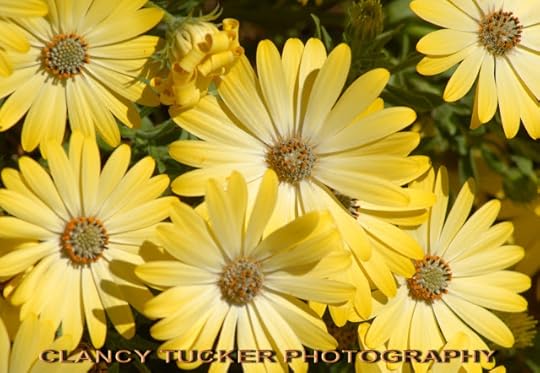
Published on November 24, 2015 03:22
November 23, 2015
24 November 2015 - WHO INVENTED THE FLUSH TOILET?
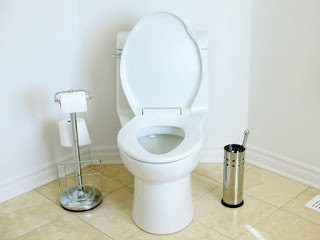
WHO INVENTED THE FLUSH TOILET?
G'day folks,
I'm about to answer a question that has no doubt caused you many sleepless nights.
The centrepiece of today’s modern bathroom, the flush toilet has equal roots in ancient sanitation practices, Elizabethan politics and Industrial Revolution know-how. Primitive latrines that utilized a constant stream of water to carry away waste date back at least 5,000 years, and early toilet systems were used by the several ancient civilizations, including the Romans and the Mohenjo-Dara and Harappa of the Indus Valley.
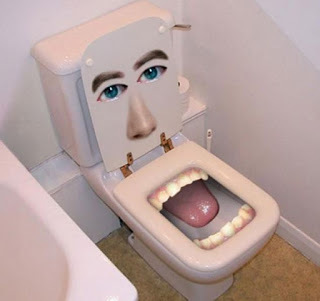
The first modern flushable toilet was described in 1596 by Sir John Harington, an English courtier and the godson of Queen Elizabeth I. Harington’s device called for a 2-foot-deep oval bowl waterproofed with pitch, resin and wax and fed by water from an upstairs cistern. Flushing Harington’s pot required 7.5 gallons of water—a veritable torrent in the era before indoor plumbing.
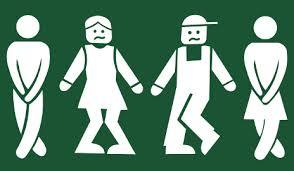
Harington noted that when water was scarce, up to 20 people could use his commode between flushes. Harington described his device in a satirical pamphlet entitled ‘A New Discourse on a Stale Subject, called the Metamorphosis of Ajax”—a pun on the term “a jakes,” which was a popular slang term for toilets. Although Harington installed a working model for Queen Elizabeth at Richmond Palace, it took several centuries—and the Industrial Revolution’s improvements in manufacturing and waste disposal — for the flush toilet to catch on.
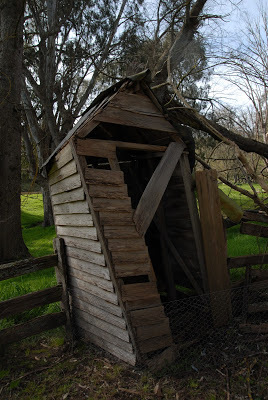
In 1775 English inventor Alexander Cumming was granted the first patent for a flush toilet. His greatest innovation was the S-shaped pipe below the bowl that used water to create a seal preventing sewer gas from entering through the toilet. In the late-19th century, a London plumbing impresario named Thomas Crapper manufactured one of the first widely successful lines of flush toilets. Crapper did not invent the toilet, but he did develop the ballcock, an improved tank-filling mechanism still used in toilets today. Crapper’s name would become synonymous with the devices he sold (although the English word “crap” predates him by centuries), thanks in part to American servicemen stationed overseas during World War I. These doughboys, unfamiliar with the relatively new-fangled invention, referred to the toilets as “crappers”—due to the Crapper brand’s ubiquity in England and Franc—and brought the term back home with them after the war.
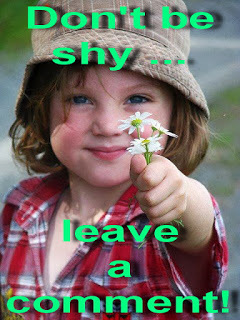
Clancy's comment: There ya go, folks. Now you can sleep soundly.
I'm ...
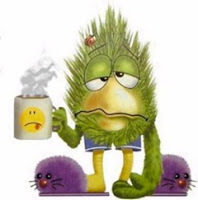

A real Aussie 'dunnie', courtesy of Rob and Kris Elliott, Thornton, Victoria, Australia
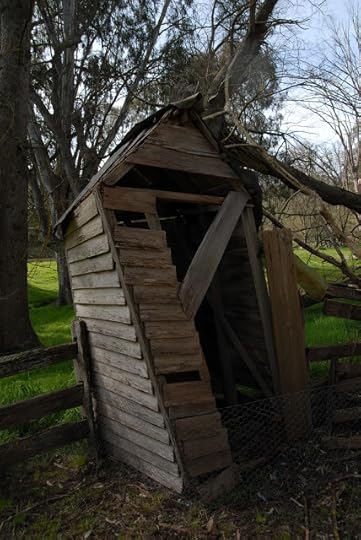
Published on November 23, 2015 03:46
November 22, 2015
23 November 2015 - PERFECT MOMENTS CAPTURED

PERFECT MOMENTS CAPTURED
G'day folks,
Check out these amazing snaps.

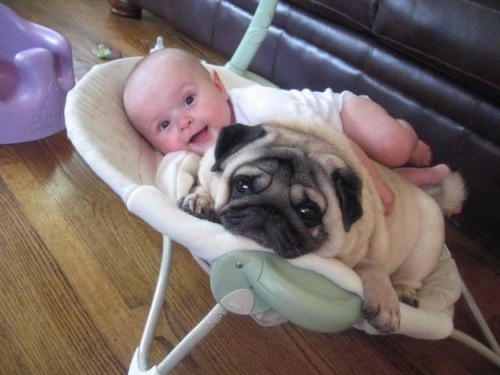
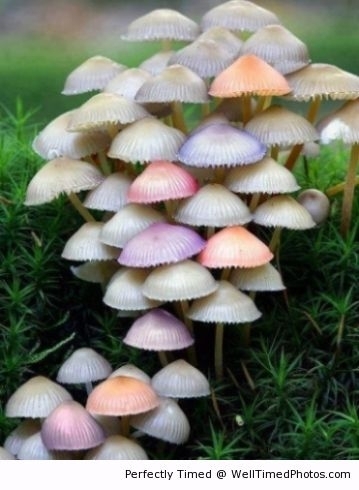
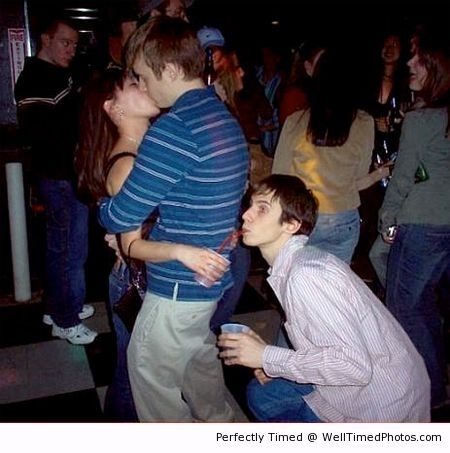
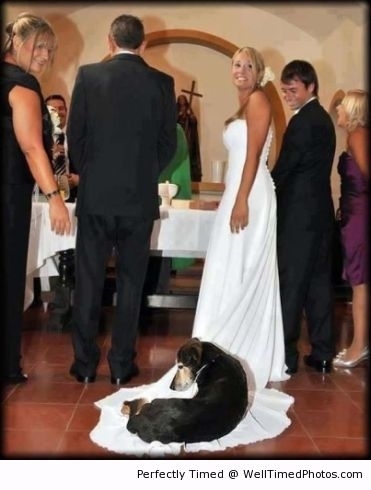
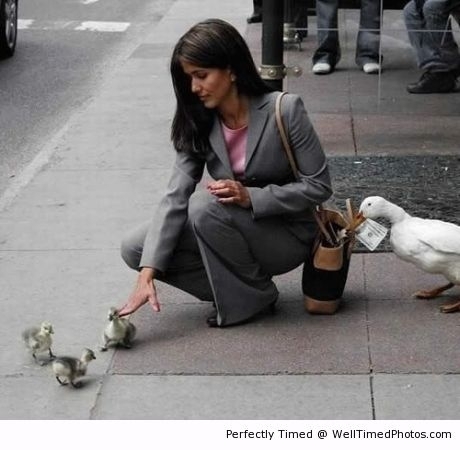

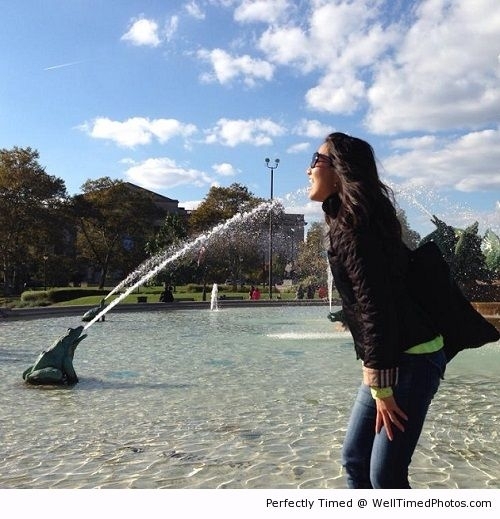
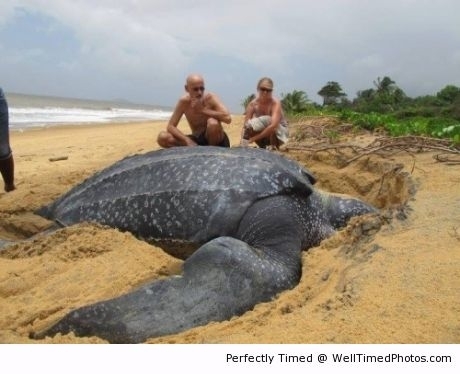
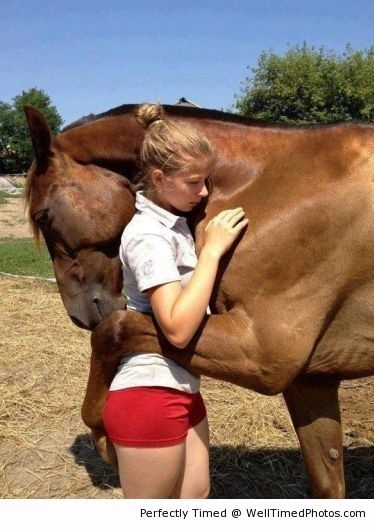
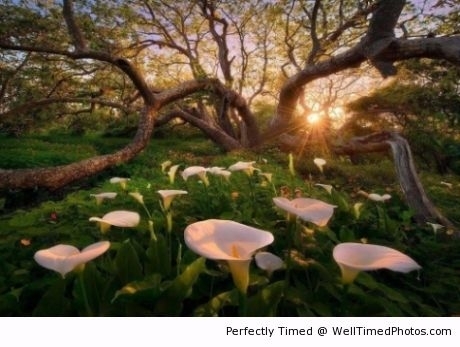
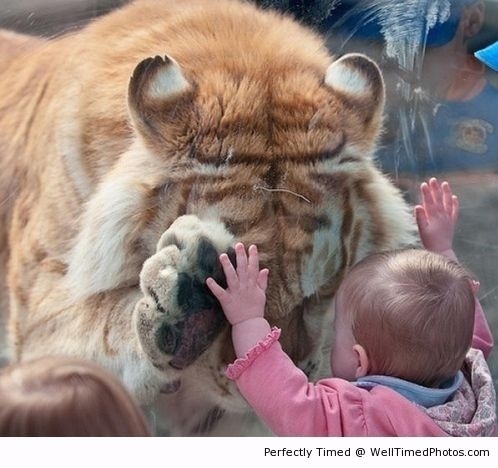
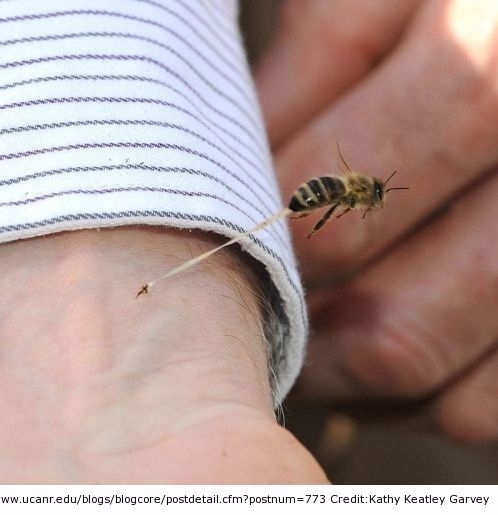
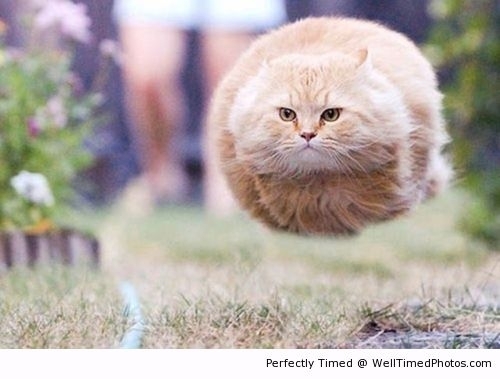
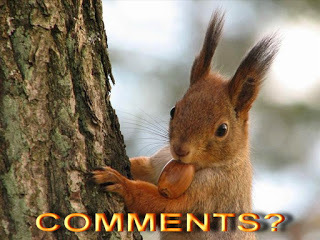
Clancy's comment: All of us strive to snap these types of shots. I guess it's like life itself - all about timing.
I'm ...


Published on November 22, 2015 05:53
November 21, 2015
22 November 2015 - GREAT TIPS OF WISDOM
GREAT TIPS OF WISDOM
G'day folks,
Time for some more wise tips to make you ponder or smile.
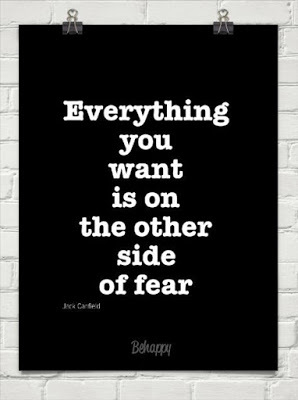

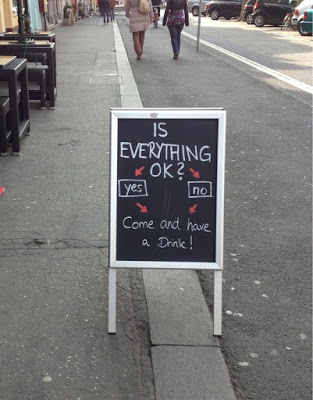
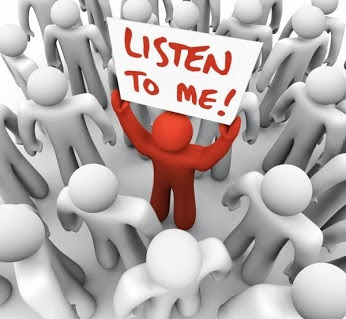
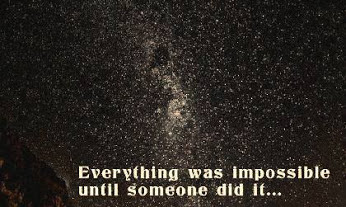

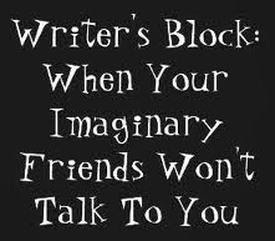

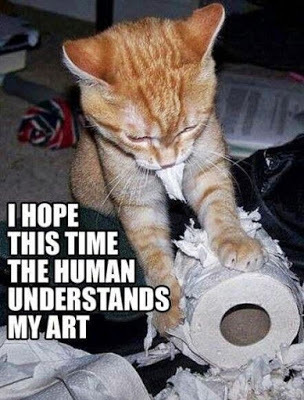

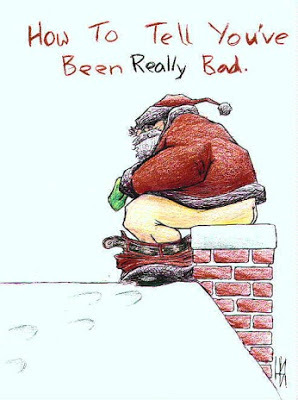
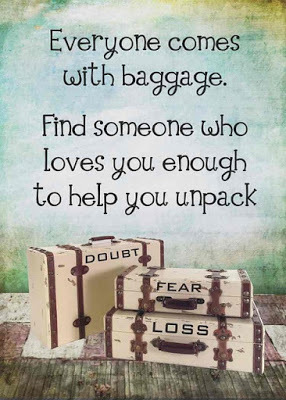
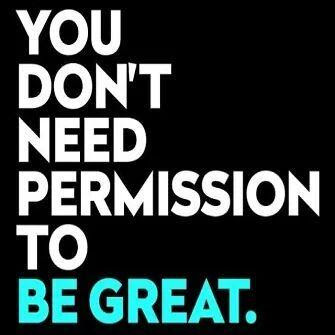
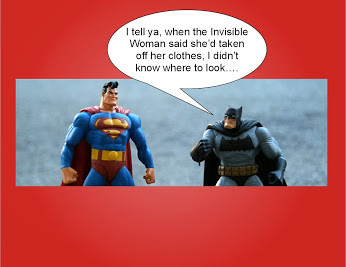
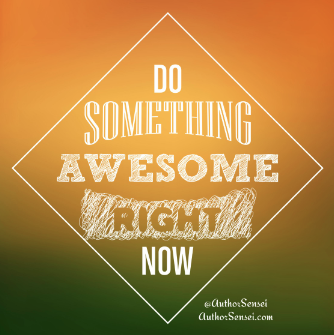
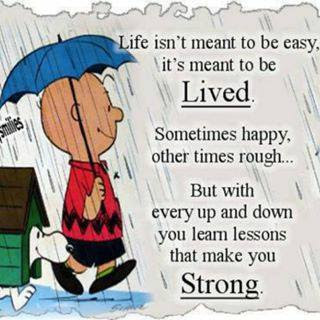
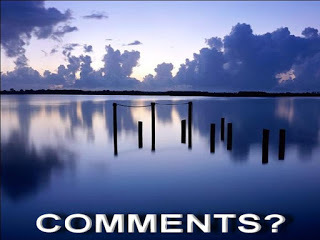
Clancy's comment: Hope some of these made you think ... Or smile.
I'm ....
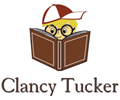
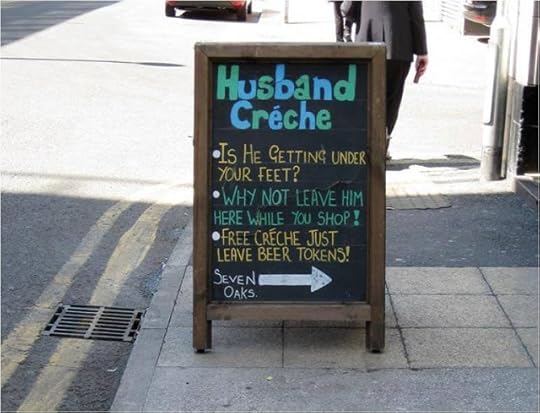
Published on November 21, 2015 02:47



